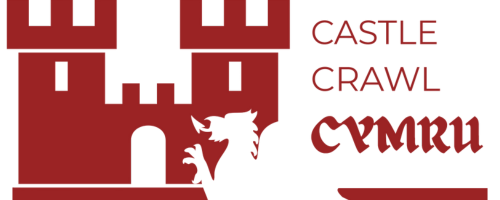Pembroke Castle | Visit Amazing Welsh Castles
Pembroke Castle is a large, well-preserved medieval fortress located in Pembrokeshire, South West Wales. Built on a strategic rocky promontory overlooking the River Cleddau, it played a significant role in the Norman invasion of Wales and later in English royal history.
The castle is especially known as the birthplace of Henry VII, the first Tudor king. Today, it is a popular visitor attraction with extensive grounds, exhibitions, and events.
Quick Facts
Location: Pembroke, Pembrokeshire, Wales
Built: Originally in 1093 by Roger de Montgomery
Material: Mainly limestone
Castle Type: Norman stone keep with concentric defences
Notable Feature: Birthplace of King Henry VII in 1457
Ownership: Privately owned and operated by the Castle’s Trust
Status: Open to the public with paid entry
Listed Status: Grade I listed building
Managed as: Heritage site and museum
Brief History
The castle began as a timber fortification built in 1093 by Roger de Montgomery, one of William the Conqueror’s most trusted lieutenants. It was part of the Norman push into southwest Wales during the conquest of the Welsh kingdoms. The original structure served as a defensive outpost to secure Norman control over the area.
In 1189, William Marshal, later Earl of Pembroke, acquired the castle through marriage. He rebuilt it in stone, including the massive round keep that still dominates the site. Under Marshal’s direction, Pembroke became one of the most formidable castles in Wales.
The castle remained in the hands of the Marshal family until it passed to the de Valence family in the 13th century. During this period, additional defensive features and domestic buildings were added.
In 1457, Margaret Beaufort gave birth to her son, Henry Tudor, in one of the castle’s towers. He later became King Henry VII after defeating Richard III at the Battle of Bosworth in 1485.
During the English Civil War, the castle was a Royalist stronghold. It was besieged and captured by Parliamentarian forces under Oliver Cromwell in 1648. After this, the castle was slighted (partly demolished) to prevent further military use.
Restoration began in the late 19th century, with significant rebuilding in the 20th century. It opened to the public and now functions as a major heritage site.
Features and Layout
The castle follows a linear plan along a limestone ridge above the River Cleddau. Its design evolved from a simple motte-and-bailey into a large concentric fortress, reflecting centuries of expansion and fortification.
The Keep
The most prominent feature is the massive circular stone keep, built by William Marshal around 1200. It stands 23 metres tall with walls over 6 metres thick. The interior includes a domed roof and multiple floors linked by a narrow spiral staircase.
Inner Ward
The inner ward houses the keep, a great hall, chapel, and residential buildings. The curtain wall around the inner ward includes several towers and a postern gate facing the river.
Outer Ward
Surrounding the inner defences is the outer ward, protected by a large curtain wall and corner towers. The main gatehouse, equipped with a drawbridge and portcullis, provided strong protection.
Wogan Cavern
Below the castle lies the Wogan Cavern, a large natural cave with a stone vault added during the medieval period. It may have served as a dock or storage space due to its access to the river.
Restoration Work
20th-century restoration included rebuilding collapsed towers, reinstating wall walks, and preserving the keep. Parts of the site remain in ruins, showing the castle’s original defensive layout.
Did You Know?
Graffiti carved into the stone by medieval prisoners and guards can still be seen in several of the towers.
Images





Legends and Stories
The Ghost of the Guard Tower
Local guides and some visitors report sightings of a ghostly figure in the Guard Tower. The apparition is often described as a soldier in medieval armour. Some believe he may have died during the Civil War siege in 1648. This story is frequently mentioned during evening ghost tours organised at the castle.
Source: Based on local guide commentary from ghost tour experiences.
The Hatching of the Tudors
A long-standing story passed through visitor interpretation panels and guided tours centres on the idea that the castle was the "birthplace of the Tudor dynasty." Though factual in that Henry VII was born here, the story is often framed as a symbolic “hatching” of a royal line that would change the face of England and Wales.
Source: Interpretation signage and Pembroke Castle Trust publications.
The Hidden Tunnel
There are persistent rumours of a secret tunnel linking Wogan Cavern to sites across the river. Though no such tunnel has been found, the cavern’s location and structure lend some credibility to the theory that it could have offered a hidden escape or access route.
Source: Repeated in TripAdvisor reviews and oral accounts from castle staff.
Visiting
Here is the current visitor guide:
Opening Times (2025/2026):
March–August: 09:30–17:30 daily; last admission at 16:30.
January–February & September–October: 10:00–17:00; last admission 30 minutes before closing.
November–February: 10:00–16:00; last admission 30 minutes before closing.
Ticket Prices:
Admission includes a free guided tour at 11:00, 12:00, 13:00, 14:00 & 15:00. Annual passes are available—costing twice a single admission— and offer year-round access except for ticketed events.Directions & Parking:
No on-site parking. Use nearby public car parks: Commons (~6 min), West Street (~8 min), Parade (~7 min), or Long Entry (~4 min) walk away.
By train: Pembroke station is a 15‑minute walk.
By bus: Bus stop directly outside with routes 348, 349 & 356.
Facilities:
Cafe & Gift Shop: On-site “Castle Kitchen” and souvenir shop.
Accessibility: Accessible rooms, grab bars, service animal welcome, emergency cords.
Dog policy: Well‑behaved dogs on short leads are allowed throughout the grounds, including tours, but not in the café or gift shop. Water bowls are provided.
Guided Tours: Included in admission, running daily at specified times, led by knowledgeable staff.
Additional Info:
Dogs are welcome during daytime visits and the annual Christmas market, but not for evening events such as ghost tours or concerts.
Nearby Attractions
The castle is located in a historic town with several other attractions within easy reach:
Monkton Priory
Located just across the river from the castle, Monkton Priory is a 12th-century church built by the same Norman lords. It features original Romanesque architecture and is still in use today. Entry is free.
Pembroke Town Trail
This self-guided trail takes visitors through historic parts of Pembroke, including medieval walls, Georgian buildings, and heritage plaques. It offers context for the town’s development alongside the castle.
Lamphey Bishop’s Palace
Approximately 2.5 miles east, this ruined palace was once a lavish retreat for medieval bishops. Managed by Cadw, it includes domestic chambers, a great hall, and large grounds. Entry is free.
Carew Castle and Tidal Mill
Located around 6 miles away, Carew Castle offers a different style of fortress with Tudor additions. The adjacent tidal mill is one of only a few restored examples in the UK. Operated by the Pembrokeshire Coast National Park Authority (entry fees apply).
Stackpole Estate
Managed by the National Trust, the Stackpole Estate includes lakes, woodland walks, and Barafundle Bay—one of the most popular beaches in Wales. It's approximately a 15-minute drive from the castle.
Visitor Tips
Arrive early to join the free guided tour and explore at a relaxed pace
Dogs are allowed on leads, but bring your own water if visiting in hot weather
Wear sturdy shoes for climbing towers and navigating uneven steps
Picnic options: You may eat packed lunches in the outer ward’s picnic area
Annual passes offer good value if you plan to visit more than once
Use Commons Car Park for the shortest walk to the main entrance
Check the website for special events like reenactments and outdoor cinema nights
FAQs
-
Most visitors spend between 2 and 3 hours exploring the grounds, towers, and exhibitions. Longer visits may include guided tours or participation in special events.
-
Some areas are accessible, including the café, shop, and parts of the outer ward. However, much of the inner ward and towers involve steep stairs and uneven ground. Accessible toilets are available on-site.
-
Yes. Dogs on short leads are allowed throughout the site, including guided tours. They are not allowed inside the café or shop. Water bowls are provided at the entrance.
-
Yes. The Castle Kitchen serves hot meals, snacks, drinks, and children’s options. Outdoor picnic areas are available as well.
-
Yes. Photography for personal use is allowed throughout the castle. Tripods, drones, and commercial photography require prior permission.
Wrapping it Up
This castle is one of the most complete and historically significant Norman castles in Wales. Its strong defensive layout, connection to the Tudor dynasty, and restored features make it a key site for understanding medieval and early modern history in the region. Today, the castle offers a mix of heritage, education, and tourism, welcoming visitors year-round.
Sources
The Castle’s Official Site
Provided up-to-date information on opening hours, ticket pricing, directions, guided tours, and dog policy.
https://www.pembrokecastle.co.ukVisit Pembrokeshire
Verified accessibility information and general visitor amenities.
https://www.visitpembrokeshire.com/attraction-listing/pembroke-castleAround Tenby
Detailed dog policy during seasonal events and accessibility context.
https://aroundtenby.co.uk/listing/pembroke-castleMy Pawfect Place
Confirmed pet policy and facilities available to dog owners.
https://mypawfectplace.com/places/united-kingdom/pembrokeshire/pembroke-castleGoogle Maps
Verified geographic coordinates for the Locational Schema.
https://www.google.com/maps/place/Pembroke+CastleTripAdvisor
Supplied anecdotal evidence and legends referenced in visitor reviews.
https://www.tripadvisor.co.uk/Attraction_Review-g552048-d296947-Reviews-Pembroke_CastleCadw – Lamphey Bishop’s Palace
Confirmed nearby attraction status and free access policy.
https://cadw.gov.wales/visit/places-to-visit/lamphey-bishops-palace




Cardiff Castle is a medieval and Victorian-era site in the centre of Cardiff, the capital of Wales.